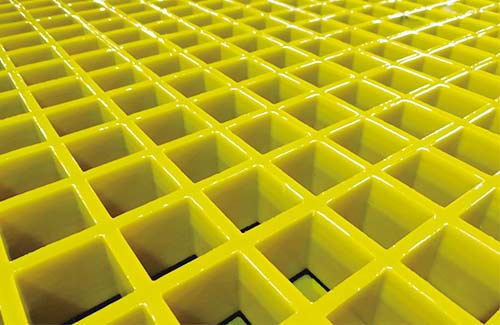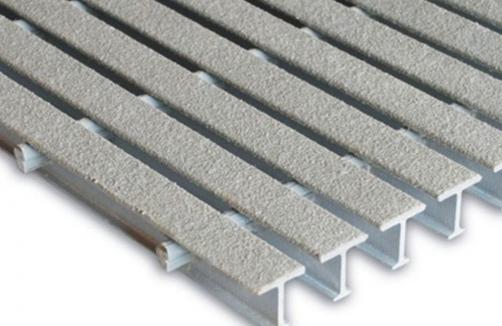FRP Grating for Wastewater Treatment Plants: The Ideal Solution for Robust and Corrosion-Resistant Platforms
Wastewater treatment plants (WWTPs) are critical infrastructure components that play a vital role in maintaining environmental health and public sanitation. These facilities are exposed to harsh conditions, including chemical exposure, heavy loads, and constant moisture, making the choice of materials for platforms and walkways a critical consideration. One of the most reliable solutions for creating durable and corrosion-resistant platforms is Fiber Reinforced Polymer (FRP) grating. But what makes FRP grating the ideal choice for wastewater treatment plants?
Why Choose FRP Grating for Wastewater Treatment?

Wastewater treatment plants are environments where traditional materials like steel and concrete often fail due to corrosion, degradation, and excessive maintenance requirements. FRP grating, on the other hand, offers a lightweight yet strong alternative that combines the benefits of fiberglass and polymer composites.
1. Устойчивость к коррозии
One of the primary challenges in WWTPs is exposure to corrosive chemicals, including acids, alkalis, and industrial effluents. FRP grating is highly resistant to these substances, ensuring long-term durability without rusting or corroding. This makes it a cost-effective solution compared to materials that require frequent painting or coating.
2. Легкий, но прочный
FRP grating is significantly lighter than steel or concrete, reducing the load on supporting structures. Despite its lightweight nature, it offers exceptional strength, making it capable of withstanding heavy foot traffic, equipment placement, and even vehicular loads in some applications.
3. Не требует особого ухода
Unlike traditional materials, FRP grating does not require painting, galvanizing, or other protective coatings. Its inherent corrosion resistance means it maintains its structural integrity over time with minimal maintenance, saving both time and money for facility operators.
4. Safety and Non-Slip Surfaces
Wastewater treatment plants often have slippery surfaces due to wet conditions. FRP grating can be manufactured with non-slip patterns, providing better traction and reducing the risk of slips and falls. Additionally, its non-conductive properties make it safer in environments where electrical hazards may be present.
Ответы на распространенные вопросы о стеклопластиковой решетке
Q: Is FRP Grating Cost-Effective Compared to Steel?
While the initial cost of FRP grating may be higher than steel, its long-term benefits—such as reduced maintenance, longer lifespan, and lower replacement costs—make it a more economical choice over time.
Вопрос: Может ли решетка FRP выдерживать экстремальные температуры?
Yes, FRP grating is designed to perform well in a wide range of temperatures, making it suitable for both hot and cold environments found in WWTPs.
Q: Is FRP Grating Environmentally Friendly?
FRP grating is made from recyclable materials and does not contain toxic substances like lead or mercury, making it an eco-friendly option for environmentally sensitive facilities.
Why Share FRP Grating Solutions?
For professionals involved in the design, construction, or maintenance of wastewater treatment plants, understanding the advantages of FRP grating can lead to better infrastructure decisions. By sharing this information, you can help facilities improve safety, reduce costs, and enhance operational efficiency. Whether you’re part of an engineering team, a facility manager, or a procurement specialist, knowing the benefits of FRP grating can make a significant difference.
In conclusion, FRP grating is the ideal solution for creating robust and corrosion-resistant platforms in wastewater treatment plants. Its durability, low maintenance requirements, and safety features make it a superior choice for demanding industrial environments. By choosing FRP grating, facilities can ensure long-term reliability while reducing operational expenses.
If you’re looking for high-quality FRP grating solutions for your next project, consider reaching out to reputable suppliers who specialize in industrial composite materials. Together, we can build safer, more efficient, and sustainable wastewater treatment infrastructure.







